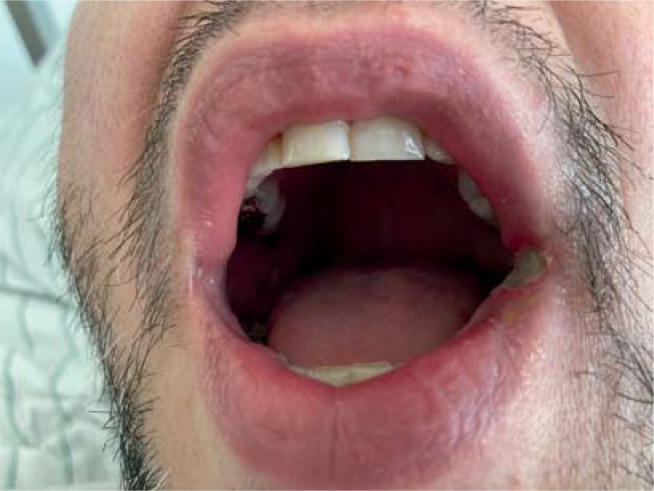A 51-year-old HIV-positive patient presented to his general practitioner with a vesicle at the left corner of the mouth which had appeared the day before. He had no clinical signs of infection; his HIV infection had been well controlled for years, both virologically and immunologically, with antiretroviral therapy. Initially, the patient received a topical combination ointment for treatment. Within a few days, the patient developed a painful ulcer at the left oral commissure. He then consulted his general practitioner again where a swab was taken from the ulcer. Using polymerase chain reaction (PCR), monkeypox virus was detected. Subsequently, an increase in monkeypox vesicles was noted on the skin, but also on the palate. With growing swelling of the base of the tongue and muffled speech, it was decided to admit the patient to hospital for antiviral treatment with tecovirimat. Under the treatment, symptoms eventually resolved rapidly. After four days, the patient could be discharged home. This case highlights that patients with recent monkeypox virus infection may initially have less pronounced clinical symptoms with no signs of infection and only few vesicles on the skin.
Translated from the original German by Ralf Thoene, MD.
Cite this as: Schlabe S, Isselstein J, Boesecke C: Ulcer at corner of mouth as first sign of infection with monkeypox virus.
FIGURE.
Footnotes
Conflict of interest statement:
The authors declare that no conflict of interest exists.



